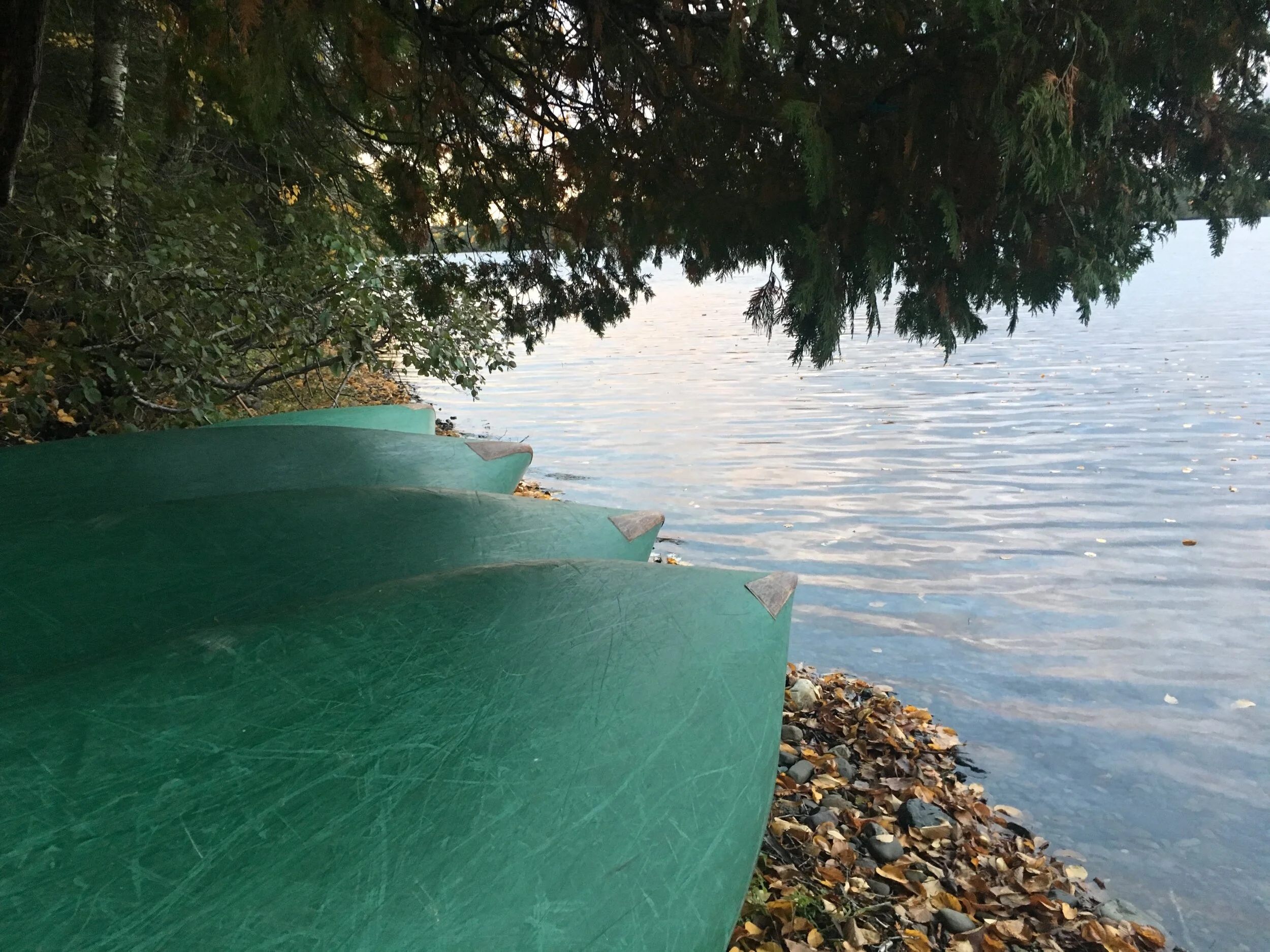You can't push a rope, you can't pull a pole
Poling is something of a lost art that natives in Maine used to travel in the low, meandering rivers of the northeast to travel upstream. There are those who say you shod never stand up in a canoe but those people have never heard of poling. It's just what it sounds like. You stand in the stern of the canoe with a 12 foot soft wood pole with a metal shoe on one end for jabbing rocky bottoms of shallow rivers.
What does one bring on a two mile canoe paddle? I wore my bathing suit and life vest with my neoprene booties as I knew there's no way to canoe without getting a bit wet. I brought. Y dry bag that I bought when tubing in Vang Vieng, Laos. I had my lunch (two hard boiled eggs, som trail mix, apple sauce and a banana) by dry clothes and my phone inside. I brought my rain coat just in case, and took down one of the instructor's numbers just in case we became stuck upstream without a paddle (which we didn't take because we hadn't finished carving ours yet.)
We took three 18-foot canoes out on the Aroostook River from the canoe racks near a decrepit shack that may or may not be part of Tim's property. When he bought it the neighbor asked if he was going to live in it. Tim said no and the neighbor said that was good because he thought the cabin was on his side of he property line. It's a no mans land in a place where no surveyor was consulted and the neighbor isn't around too much.
I went out with David "Giggles," who just finished the Appalachian trail in March southbound. He's from Gunbarrel, Texas and loves to fish. Allison, a junior at Boston University went out with Zander, an 18 -year old from Canada and Craig, an Army reservist from South Carolina took his own boat. We planned to meet at 9 and be on the river by 10. We brought a case of PBR and a packed lunch to meet at the bridge that runs over route 11, two miles upstream. I cycled over that bridge on the way to Jack Mountain.
It's a lot of work to move a boat upriver. Keeping the pole on one side of the boat the person in the back launches the canoe off the bottom. The pole stays in the water and acts as a rudder to direct the canoe. The Aroostook River is only 6 inches to two feet deep right now. This summer has been a drought in northern Maine so the river is a lazy slow moving trickle between 25 and 50 feet across. There are a few fast moving rocky areas but mostly it's a meandering River flowing with the wind and current.
David and I traded off and on standing and doing the work in the back and basking in the sun in the front. Poling is a subtle art of reading the river and watching the pole to keep it parallel to the side of the canoe instead of sending the boat careening to one side or another. It was a beautiful day but frustrating work. We heard a whoop from around the bend and knew the bridge was in sight.
We ate our lunch under the bridge and played some Red Hot Chili Peppers to celebrate the occasion. A few cars drove overhead but mostly it was just the sound of the water and five novice canoe pollers hanging out.
Poling back was easier due to the downriver direction and the lessons learned from spending the time poling up. Craig found an orange traffic cone half buried in the bank and we finished the case of PBR which was in a cooler of cold river water as ice, which has to be bought in town, doesn't last up here very long. We arrived back to camp in the late afternoon and pulled the boats back on the rack. It was a great Sunday on the Aroostock.





